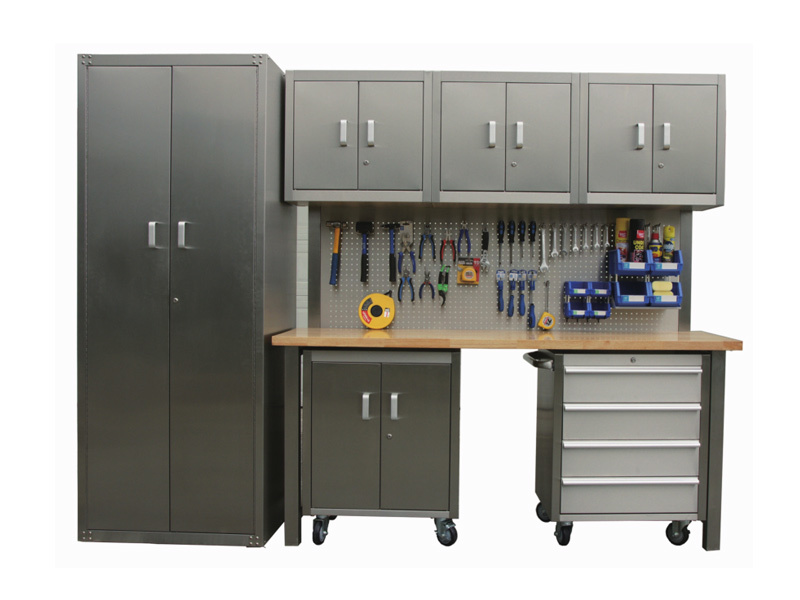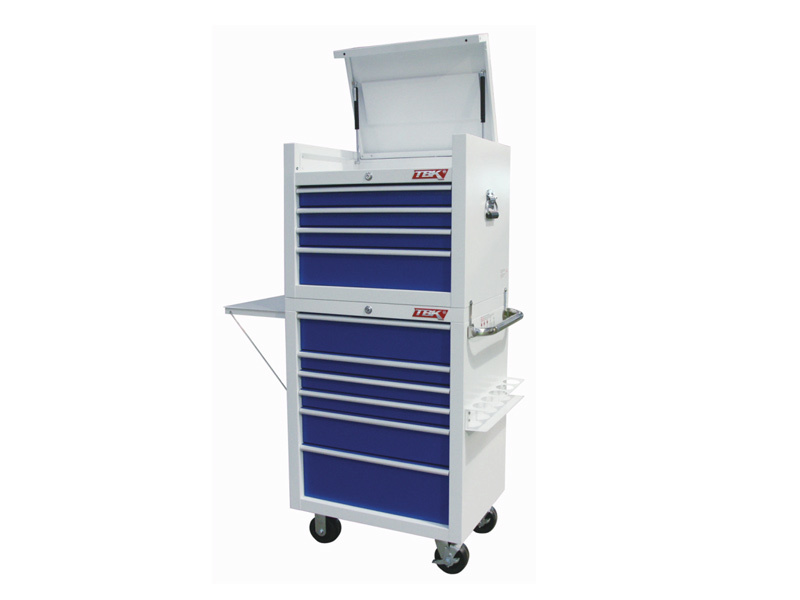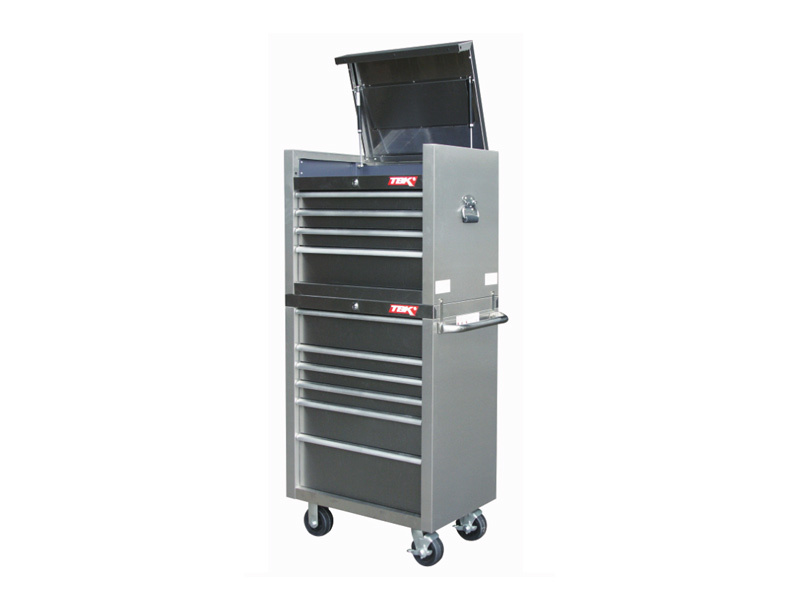Maximizing Space: The Benefits of a Tool Cart in Manufacturing
Release time:
May 01,2025
Maximizing Space: The Benefits of a Tool Cart in Manufacturing Table of Contents 1. Introduction 2. What is a Tool Cart? 3. The Importance of Tool Carts in Manufacturing 4. Space Optimization with Tool Carts 4.1 Flexibility and Mobility 4.2 Efficient Use of Space 5. Improved Organization and Productivity 5.1 R

Maximizing Space: The Benefits of a Tool Cart in Manufacturing
Table of Contents
- 1. Introduction
- 2. What is a Tool Cart?
- 3. The Importance of Tool Carts in Manufacturing
- 4. Space Optimization with Tool Carts
- 5. Improved Organization and Productivity
- 6. Enhanced Safety in the Workplace
- 7. Customization and Versatility of Tool Carts
- 8. Case Studies and Real-World Examples
- 9. Frequently Asked Questions
- 10. Conclusion
1. Introduction
In the fast-paced world of manufacturing, **space optimization** is a critical factor that can directly impact overall productivity and efficiency. As teams strive to maximize the functionality of their workspace, the choice of tools and equipment becomes paramount. One solution that stands out is the **tool cart**. This versatile and mobile workstation enhances the way manufacturers organize, store, and access their essential tools and components.
In this article, we will delve into the myriad benefits of implementing tool carts in manufacturing environments, focusing on how they can help businesses streamline operations, enhance safety, and ultimately improve bottom lines.
2. What is a Tool Cart?
A tool cart is a mobile storage solution designed to facilitate the easy transport of tools, equipment, and supplies within a manufacturing environment. Typically featuring multiple tiers, drawers, and compartments, tool carts are constructed from durable materials, ensuring they can withstand the rigors of industrial use. They often come equipped with wheels for easy mobility, allowing operators to move tools to wherever they are needed.
3. The Importance of Tool Carts in Manufacturing
The manufacturing sector is characterized by its complexity and the need for efficiency. Tool carts serve as an integral part of this ecosystem by offering several key benefits:
- **Increased accessibility**: With the right tools at hand, operators can complete tasks more quickly and efficiently.
- **Enhanced organization**: Tool carts provide designated spaces for tools, reducing the time spent searching for equipment.
- **Adaptability**: Tool carts can be employed in various manufacturing settings, from assembly lines to fabrication areas.
4. Space Optimization with Tool Carts
Utilizing tool carts effectively can lead to significant improvements in space management. Below, we explore two primary aspects of space optimization via tool carts.
4.1 Flexibility and Mobility
Tool carts are designed for mobility, allowing them to be easily maneuvered from one workstation to another. This **flexibility** is crucial in a dynamic manufacturing environment where tasks can change rapidly. Operators can transport essential tools and materials directly to their work areas, minimizing unnecessary trips and enhancing workflow efficiency.
4.2 Efficient Use of Space
Effective use of vertical space is a hallmark of good workspace design. Tool carts, with their multi-tiered designs, allow for the vertical organization of tools and supplies. By elevating storage, manufacturers can free up valuable floor space for other purposes, such as additional machinery or workstations.
5. Improved Organization and Productivity
A well-organized workspace leads to improved productivity. Tool carts facilitate better organization in the following ways:
5.1 Reducing Clutter
A cluttered workspace can lead to inefficiencies, distractions, and potential safety hazards. Tool carts help to mitigate these issues by consolidating tools and equipment into a single, manageable location. This organization reduces clutter on workbenches and floors, allowing for a safer and more effective workspace.
5.2 Streamlined Workflows
With tools organized and easily accessible, the workflow of manufacturing processes is streamlined. Operators spend less time searching for the tools they need and more time focusing on their tasks. This efficiency can lead to shorter production cycles and increased output.
6. Enhanced Safety in the Workplace
Safety is paramount in manufacturing. Tool carts contribute to a safer environment in several ways:
- **Reduced trip hazards**: By keeping tools off the floor and organized, tool carts help eliminate obstacles that could lead to accidents.
- **Ergonomic advantages**: Tool carts can be designed to meet ergonomic standards, minimizing the strain on workers when accessing tools.
- **Designated storage**: A dedicated space for tools prevents them from being misplaced or left in hazardous areas.
7. Customization and Versatility of Tool Carts
One of the standout features of tool carts is their customization options. Manufacturers can select or modify tool carts to suit their specific needs, including:
- **Adjustable shelving**: Customized shelving can accommodate tools of varying sizes.
- **Drawer configurations**: Different drawer layouts can be designed to house specific types of tools, optimizing for ease of use and accessibility.
- **Specialized attachments**: Magnetic strips, pegboards, or additional compartments can be added to further increase functionality.
8. Case Studies and Real-World Examples
To illustrate the benefits of tool carts in a manufacturing setting, we can look at several real-world examples:
- **Automotive Assembly Plant**: A leading automotive manufacturer implemented tool carts on their assembly lines. By integrating tool carts, they increased assembly speed by 20%, as workers could access tools without leaving their stations.
- **Electronics Manufacturing Facility**: An electronics manufacturer adopted tool carts to improve its assembly process. This resulted in a 30% reduction in time spent searching for tools, directly impacting productivity and output.
9. Frequently Asked Questions
What are the most common types of tool carts used in manufacturing?
Common types include service carts, tool organizers, and mobile workstations, each designed for specific tasks and tool types.
How can tool carts improve employee morale?
By providing organized spaces and reducing frustration associated with clutter, tool carts create a more pleasant work environment, boosting employee satisfaction and productivity.
Are tool carts customizable for different industries?
Yes, tool carts can be tailored to meet the specific needs of various industries, ensuring that the right tools are always accessible.
What materials are tool carts typically made from?
Tool carts are usually constructed from durable materials like steel or heavy-duty plastic, ensuring longevity and resilience in demanding environments.
How do I maintain a tool cart for longevity?
Regular cleaning, checking for loose components, and ensuring wheels are functional can help maintain tool carts, prolonging their service life.
10. Conclusion
Incorporating tool carts into a manufacturing environment can significantly enhance efficiency, improve organization, and promote workplace safety. By optimizing space and streamlining workflows, manufacturers can enjoy not only boosted productivity but also a more harmonious and organized operation. As the manufacturing sector continues to evolve, tool carts stand out as a valuable asset—enabling teams to maximize their potential and achieve outstanding results. Investing in the right tool cart is not just a practical decision; it’s a strategic move toward greater operational excellence.
More information




